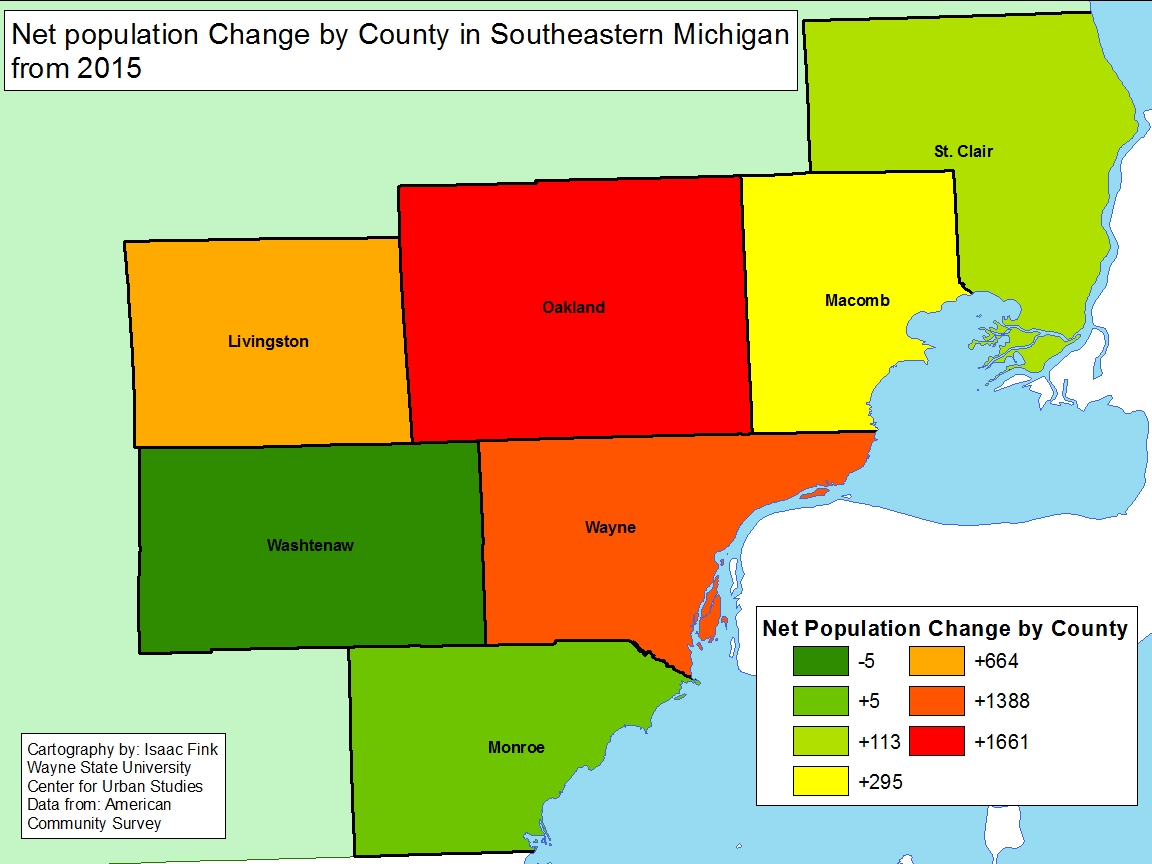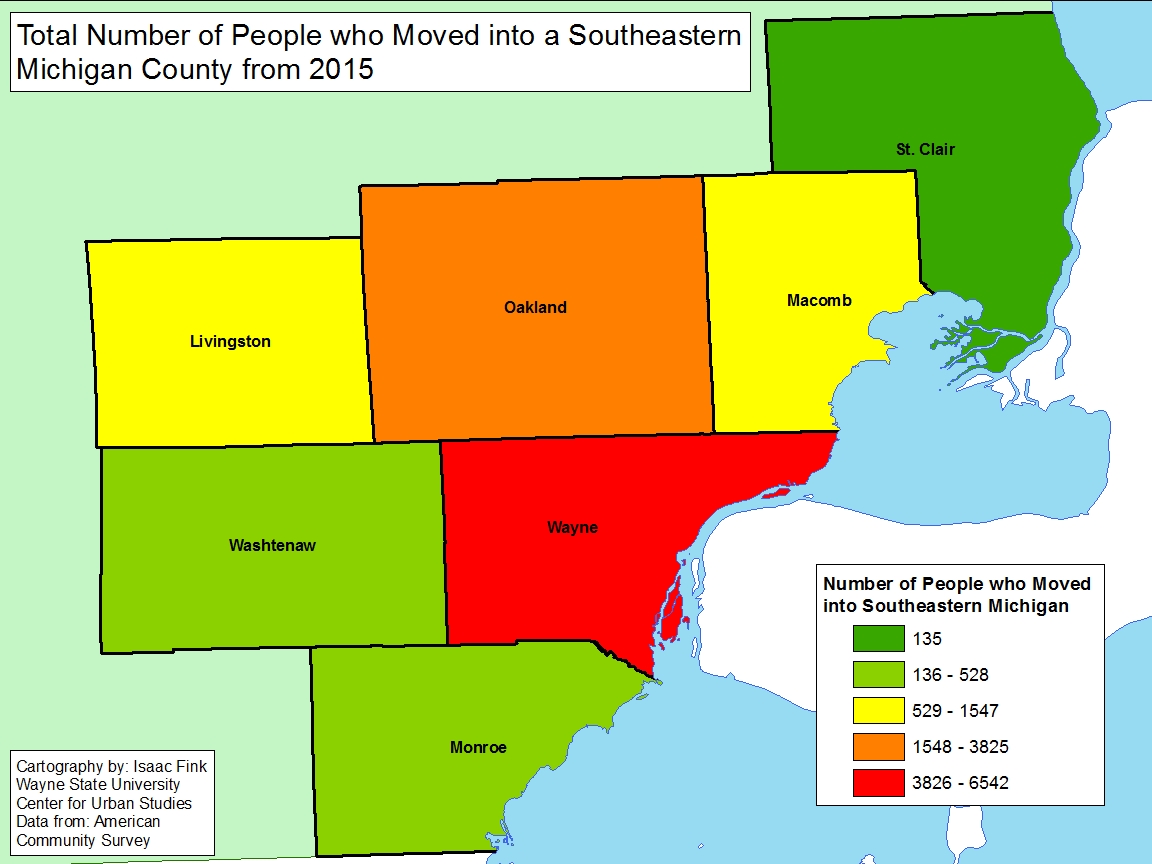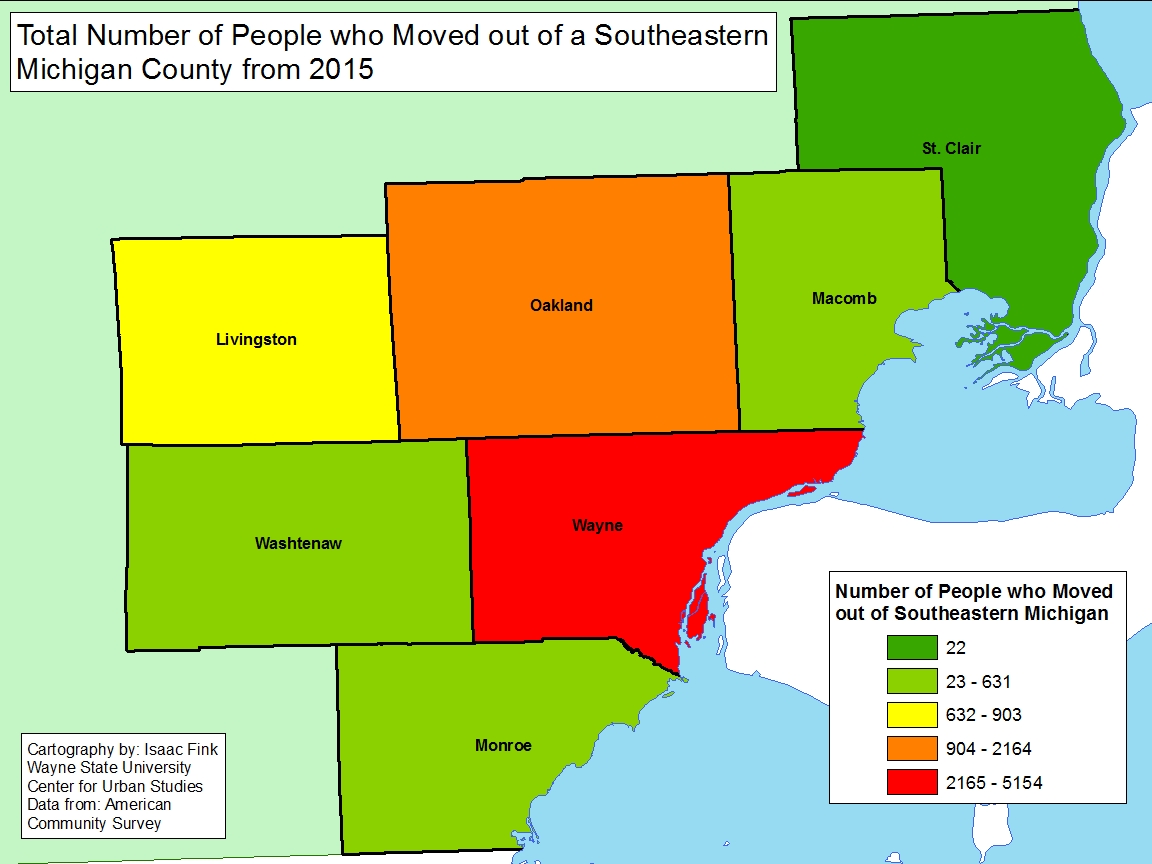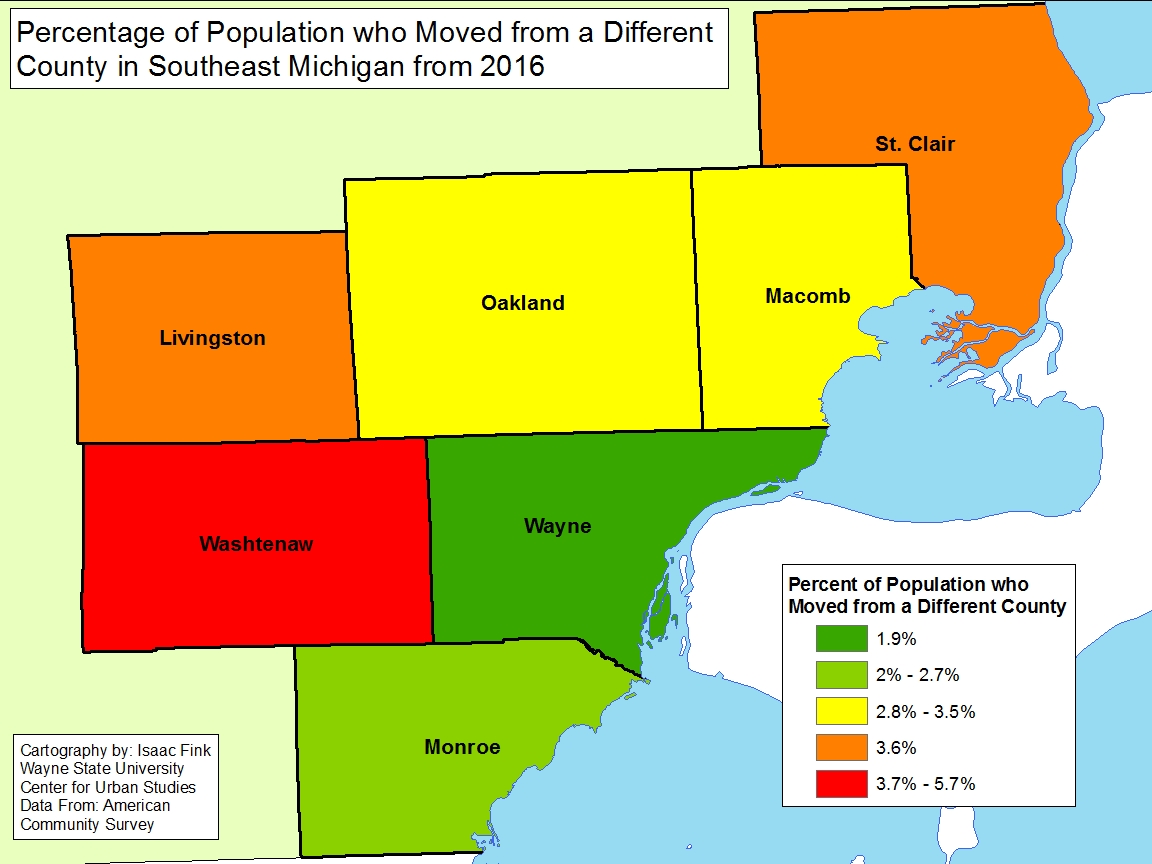Suburbs are “in” again, according to recent research highlighted in the Wall Street Journal, after nearly a decade of increased migration to and interest in cities. However, while the pandemic has changed how many of us live, and plan to live, Census data shows that in Southeastern Michigan there has been a trend for some time of people leaving the more heavily populated areas and moving to the less dense areas, and increasing density there.
In 2019 Wayne County had the highest population density at 2,872 people per square mile. Detroit is located in Wayne County and in 2019 it had a population density of 4,689 per square mile, which remains the highest in the state despite decades of decline. As both the second and third map below show migration out of Wayne County has been the highest in the region since at least 2010. Between 2019 and 2014 there was a 1.8 percent decline in the population density of Wayne County and between 2010 and 2019 the total decline came in at 6 percent. Wayne County had a population of 1.75 million people in 2019 as compared to 1.77 million in 2014.
Washtenaw County, which had a population density of 520 people per square mile in 2019, experienced the highest percentage increase in population density between 2014-2019 and 2010-2019. According to Census data, between 2014-2019 there was a 4.3 percent increase in population density and between 2010-2019 there was a 6.7 percent increase. In 2019 Washtenaw County had a population of 367,601.
In Southeastern Michigan, Wayne, Macomb and Oakland counties all had the highest population densities at 2,872, 1,814 and 1,475, respectively. While Wayne County has lost population in recent years, Macomb and Oakland counties gained it, and with that came an increase in density. Between 2010-2019 Macomb County experienced a 3.9 percent increase in its population density and Oakland County experienced a 4.4 percent increase. Aside from Washtenaw County, Livingston County was the only other one to experience an increase; between 2010-2019 Livingston County experienced a 3.6 percent increase in population density. Monroe and St. Clair counties remain the least densely populated and have lost density since 2010 (a smaller decrease than Wayne County).



According to HomeSnacks.com, which ranks the fastest growing communities based on Census data, the following places have experienced the highest percentage of population growth since 2010 in Michigan:
- Rockford
- Novi
- Coldwater
- Auburn Hills
- East Grand Rapids
- Chelsea
- New Baltimore
- Milan
- Kentwood
- Rochester
Of these 10 communities, three are in Oakland County (Novi, Rochester, Auburn Hills), one is in Macomb County (New Baltimore) and two are in Washtenaw County (Chelsea and Milan); none are in Wayne, Washtenaw or Monroe counties, all of which have been losing residents.
So, while Southeastern Michigan has been experiencing the migration of residents out of the Detroit for sometime, it is expected to continue. According to a recent Wall Street Journal article, the pandemic has caused the largest cities in the country to experience an exodus of residents, in part, due to an increased accessibility of remote work. According to the Wall Street Journal’s analysis of US Post Service data and Census data, the Midwest, Northeast and West all lost residents since the pandemic began while the South gained residents.
A shift in migration also means there will be, eventually, a shift in the fiscal health of cities and regions. In areas where people are leaving, tax revenue will also depart. What this could mean for places like Detroit and Michigan has yet to remain seen. However, with the continued out-migration of residents from Michigan over the last decade we do know that the State is losing another Congressional seat.



